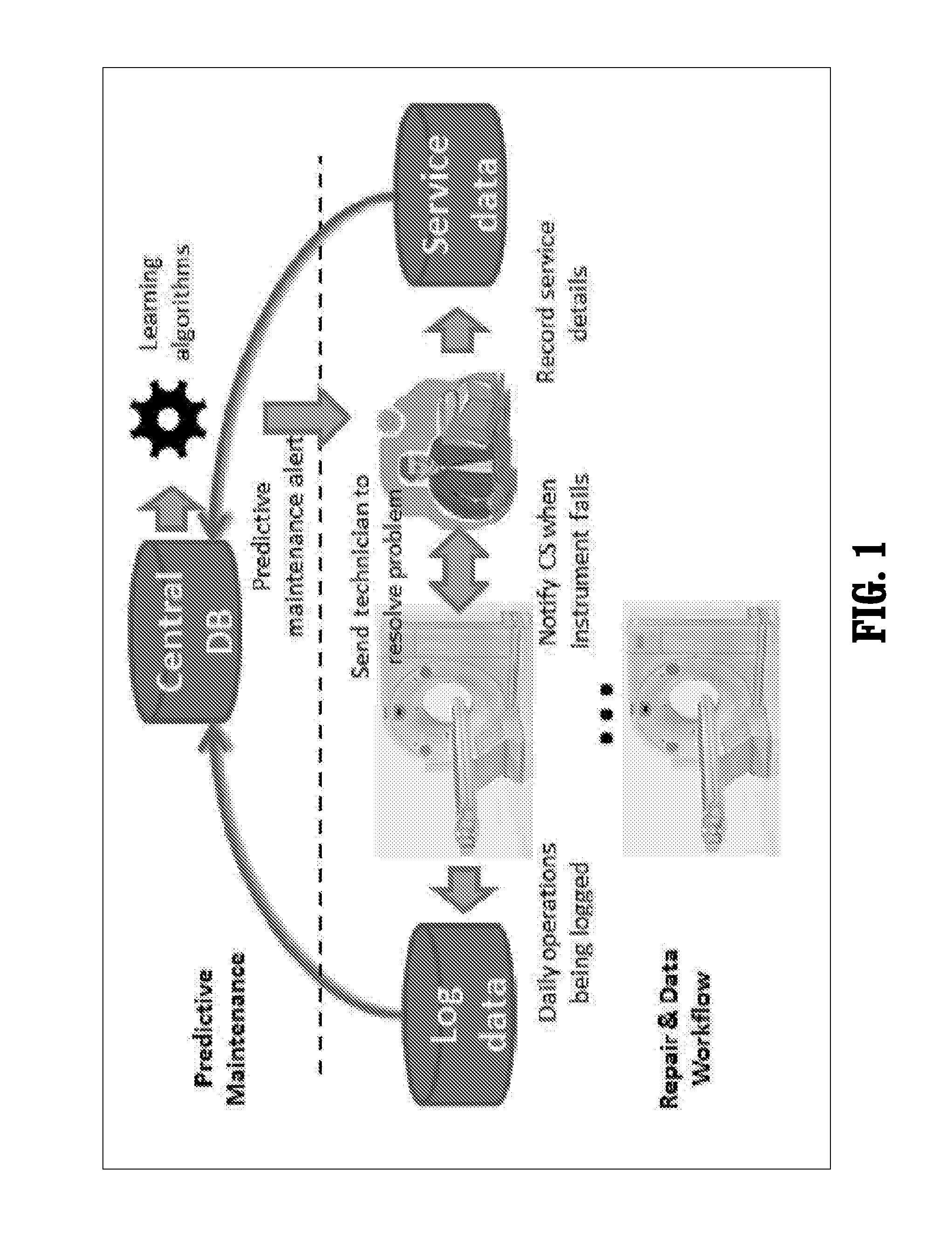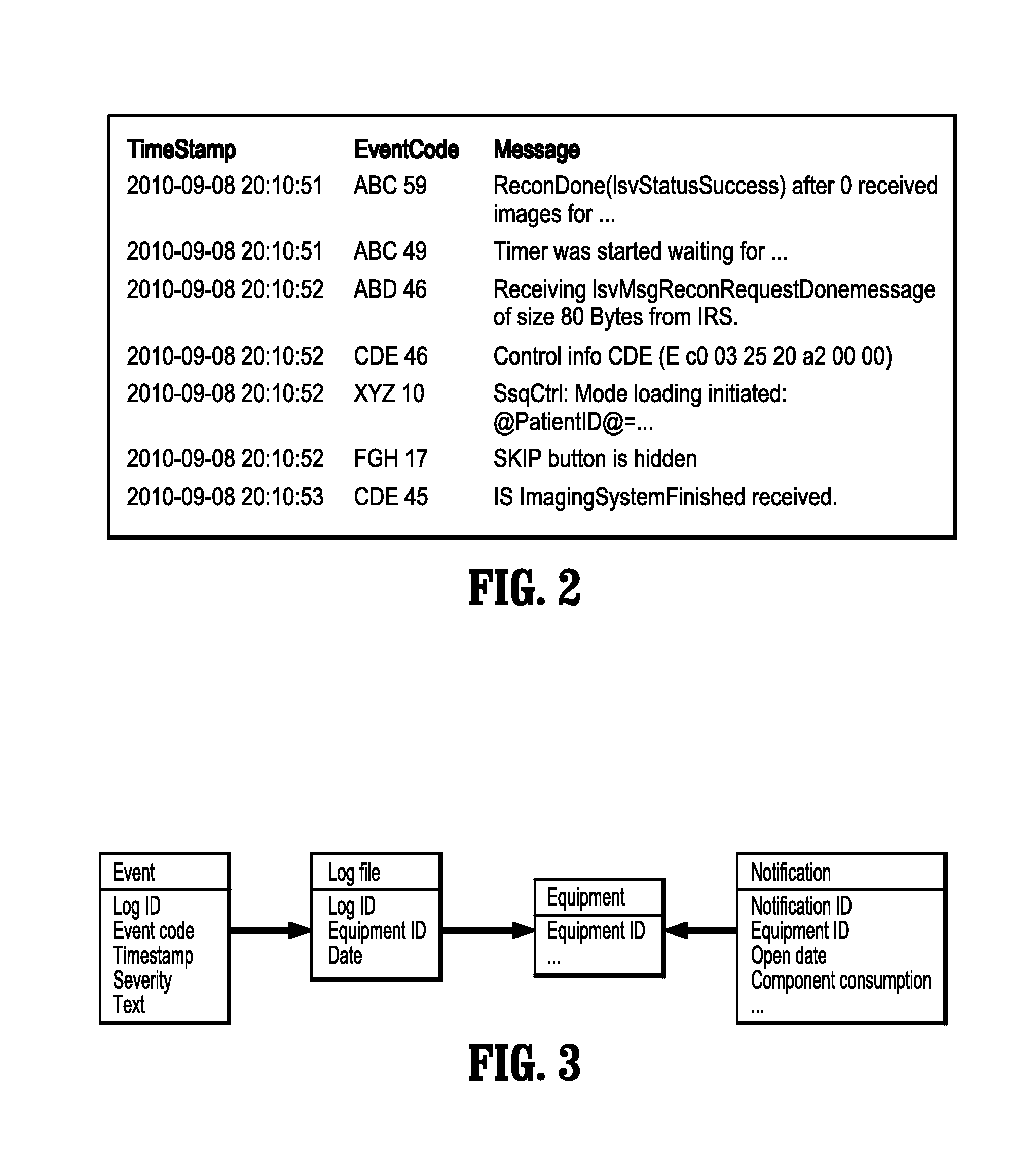Log-based predictive maintenance
a predictive maintenance and log technology, applied in the field of methods for predictive maintenance, can solve the problems of ineffective scheduling maintenance, high labor intensity, and inability to meet the needs of in-service machines, and achieve the effect of rich operational information
- Summary
- Abstract
- Description
- Claims
- Application Information
AI Technical Summary
Benefits of technology
Problems solved by technology
Method used
Image
Examples
Embodiment Construction
[0030]Exemplary embodiments of the disclosure as described herein generally provide systems and methods for a data-driven approach for predictive maintenance using logs. While embodiments are susceptible to various modifications and alternative forms, specific embodiments thereof are shown by way of example in the drawings and will herein be described in detail. It should be understood, however, that there is no intent to limit the disclosure to the particular forms disclosed, but on the contrary, the disclosure is to cover all modifications, equivalents, and alternatives falling within the spirit and scope of the disclosure.
[0031]A typical service life cycle is as follows: machinery operates normally at first. When unexpected or undesirable behavior occurs, the customer calls the service center for support, a “notification” is opened and repair service is scheduled. Then a technician comes on-site to resolve the issue. After it is resolved, the technician updates th...
PUM
 Login to View More
Login to View More Abstract
Description
Claims
Application Information
 Login to View More
Login to View More - R&D
- Intellectual Property
- Life Sciences
- Materials
- Tech Scout
- Unparalleled Data Quality
- Higher Quality Content
- 60% Fewer Hallucinations
Browse by: Latest US Patents, China's latest patents, Technical Efficacy Thesaurus, Application Domain, Technology Topic, Popular Technical Reports.
© 2025 PatSnap. All rights reserved.Legal|Privacy policy|Modern Slavery Act Transparency Statement|Sitemap|About US| Contact US: help@patsnap.com



